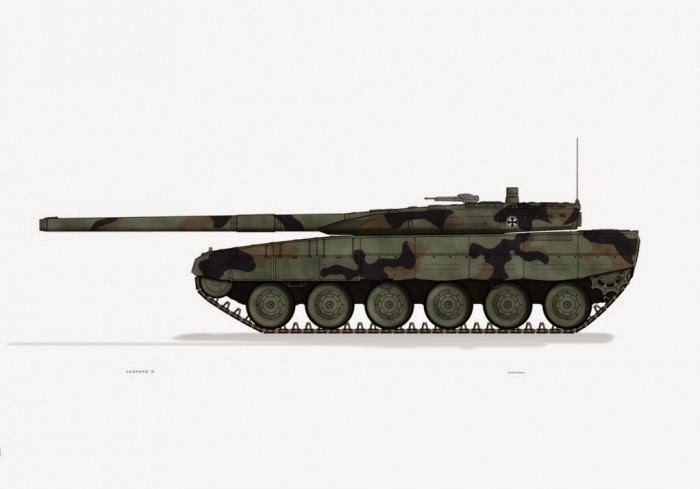The German Parliament approved a proposal to develop a new generation of tanks. The program will be included in the medium-term planning of the German Ministry of Defense.
The decision comes amid tensions from the “Ukrainian crisis” where the number of Leopard 2A6 tanks 225/7 that the Bundeswehr (German military) aims to maintain operational would become suddenly inadequate. The German Army just received its first Leopard 2A7’s and they’re already off and running for a new MBT (main battle tank).
The new Tank will be a Leopard 3 and will be designed from the ground up and will not be a modification of a Leopard 2. Upgrading old tanks is fairly routine and accounts for the dangers of the present. Developing a new advanced tank, instead, is a bet on the future. In August, German company Krauss-Maffei Wegmann (KMW), makers of the current versions of the Leopard tank, merged with French defense company Nexter. Speaking to the merger, KMW CEO mentioned the idea of a Leopard 3 tank, noting that France has a strategic perspective that stretches decades into the future.
Russia will begin mass production of new next generation T14 tanks in 2016.
There are few details at present about what, exactly, the Leopard 3 program will entail, and what improvements it will have over previous generations of tank design. As Russia’s currency crumbles and the war in Ukraine drags on inconclusively, the urgency behind the new request for a tank may fade.
Cold War 2.0
Nuclear Weapons in both USA and Russia are beyond START treaty levels
The US government’s October 2014 report claimed that Russia had 1,643 nuclear missiles ready to launch (an increase from 1,537 in 2011) – one more than the US, thus overtaking the US for the first time since 2000; both countries’ deployed capacity being in violation of the 2010 New START treaty that sets a cap of 1,550 nuclear warheads
SOURCES : defense-blog, Wikipedia, popular science

Brian Wang is a Futurist Thought Leader and a popular Science blogger with 1 million readers per month. His blog Nextbigfuture.com is ranked #1 Science News Blog. It covers many disruptive technology and trends including Space, Robotics, Artificial Intelligence, Medicine, Anti-aging Biotechnology, and Nanotechnology.
Known for identifying cutting edge technologies, he is currently a Co-Founder of a startup and fundraiser for high potential early-stage companies. He is the Head of Research for Allocations for deep technology investments and an Angel Investor at Space Angels.
A frequent speaker at corporations, he has been a TEDx speaker, a Singularity University speaker and guest at numerous interviews for radio and podcasts. He is open to public speaking and advising engagements.


